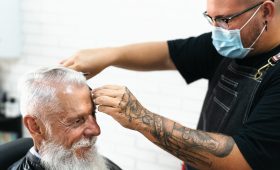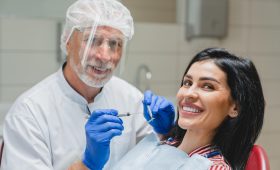A penis enlargement pump, also known as a vacuum erection device (VED), is a non-invasive tool designed to increase the size of the penis temporarily and, in some cases, provide firmer erections. The device works by creating a vacuum around the penis, drawing blood into the erectile tissue, resulting in an erection. The components typically include a plastic cylinder that fits over the penis, a pump to create suction, and a constriction ring placed at the base of the penis to maintain the erection once the pump is removed.
The primary target audience for penis pumps includes individuals dealing with erectile dysfunction (ED) or men looking for a non-surgical way to enhance the appearance of their penis. Some also use these devices to address psychological concerns related to self-esteem and body image.
How Does a Penis Enlargement Pump Work?
The basic mechanism of a penis pump revolves around creating negative pressure, which increases blood flow into the penis. This process can be broken down into a few key steps:
- Placement of the Cylinder: The user places the plastic cylinder over the flaccid penis.
- Creating Suction: Using either a manual or battery-operated pump, the air is drawn out of the cylinder, creating a vacuum.
- Blood Flow Increase: The vacuum causes blood vessels to expand, promoting an influx of blood into the erectile tissues, leading to an erection.
- Applying the Constriction Ring: To maintain the erection, a tight ring can be placed at the base of the penis to prevent the blood from flowing back out too quickly.
- Usage Time: It’s generally recommended to remove the pump after about 15-30 minutes to avoid tissue damage or discomfort.
Although pumps may provide a temporary visual enlargement of the penis, they do not cause permanent growth. The devices are most commonly used as part of ED management, but their role in actual size enhancement remains controversial and limited.
Do Penis Pumps Really Work?
The effectiveness of penis pumps is mixed. While they can temporarily increase the size of the penis during usage, their capacity to create long-term growth is debated. For erectile dysfunction treatment, some users report improved erections, especially when combined with other ED treatments like medications. However, the ability of these devices to enhance actual penis length or girth permanently is not scientifically well-supported. Users looking for a reliable or long-term enlargement solution often find that the effects diminish once the pump is no longer in use.
Potential side effects include:
- Swelling or bruising from overuse
- Numbness or discomfort if the constriction ring is worn too long
- Temporary discoloration of the penis due to trapped blood
Given the limitations and temporary nature of the results, individuals seeking significant or permanent enhancement often turn to surgical solutions.
The Case for Penis Enlargement Surgery
Penis enlargement surgery, also known as phalloplasty or penile augmentation, offers a more definitive solution for individuals seeking a permanent change in size. This approach involves surgical intervention to increase the length, girth, or both of the penis. There are several types of surgical procedures available, each with its specific goals, risks, and recovery times. For those dissatisfied with non-invasive methods such as pumps or extenders, surgery can provide a more predictable outcome.
Types of Penis Enlargement Surgery
There are two main categories of penis enlargement surgery: lengthening surgeries and girth enhancement surgeries. Each method targets a different aspect of the penis, and in some cases, both approaches can be combined for comprehensive enhancement.
1. Penile Lengthening Surgery
This surgery aims to increase the visible length of the penis. It primarily involves cutting the suspensory ligament, which connects the penis to the pubic bone, allowing a portion of the penis that is typically hidden to extend outward.
Procedure:
- The surgeon makes an incision at the base of the penis.
- The suspensory ligament is carefully cut, which allows the penis to drop forward and appear longer.
- A silicone spacer or graft may be inserted to prevent the ligament from reattaching too closely during healing.
- The incision is closed, and the patient is usually advised to avoid sexual activity for several weeks.
Results and Expectations:
- This procedure can result in a visible length increase of 1-3 cm in most cases.
- However, since the surgery does not increase the internal structure of the penis, the size increase is most noticeable in the flaccid state rather than when erect.
Risks:
- Loss of upward angle during erection
- Scarring or infection at the incision site
- Limited increase in erect length
2. Girth Enhancement Surgery
Girth enhancement focuses on increasing the thickness of the penis by adding tissue, fat, or synthetic implants. There are several methods for girth enlargement, including autologous fat transfer, dermal grafts, and silicone implants.
Methods:
- Fat Transfer: Fat is harvested from another part of the patient’s body, such as the abdomen or thighs, and injected into the penis. While the initial results can be impressive, some of the fat may reabsorb over time, necessitating follow-up treatments.
- Dermal Grafts: Tissue grafts are taken from areas such as the buttocks or thighs and placed around the shaft of the penis to increase thickness. This method tends to provide longer-lasting results compared to fat transfer.
- Implants: Silicone implants are inserted under the skin of the penis to enhance girth. These are permanent and do not reabsorb, making them a popular option for those seeking a lasting change.
Recovery and Risks:
- Swelling and bruising are common in the first few weeks after surgery.
- There is a risk of infection, asymmetry, or implant shifting.
- Patients need to refrain from sexual activity for a prescribed recovery period.
Combined Length and Girth Enhancement
For individuals looking for a more comprehensive transformation, surgeons may offer a combination of both lengthening and girth enhancement procedures. This approach provides a more balanced and noticeable enlargement but also involves greater risks and a longer recovery period.
Recovery Process After Penis Enlargement Surgery
The recovery process varies depending on the type and extent of surgery performed. In general:
- Initial Healing: Patients experience swelling, bruising, and discomfort for the first few weeks.
- Activity Restrictions: Sexual activity and strenuous physical activity should be avoided for 4-6 weeks to allow for proper healing.
- Follow-Up Care: Regular follow-up appointments are crucial to monitor healing and detect any complications.
- Use of Extenders: After ligament-cutting surgeries, patients may be advised to use penis extenders to maintain the length gained during surgery.
Risks and Considerations
While penis enlargement surgery can offer significant benefits, it also carries risks. These include:
- Scarring or permanent deformities if the surgery does not heal correctly.
- Nerve damage leading to reduced sensitivity or erectile dysfunction.
- Dissatisfaction with the results, as not all patients achieve their desired size.
- Psychological challenges, as expectations may not always align with the outcome.
Given these risks, it is crucial to have realistic expectations and consult with a qualified urologist or plastic surgeon before undergoing surgery.
Is Surgery the Best Option?
Penis enlargement surgery offers more permanent results than non-invasive methods like pumps or extenders. However, it is not without challenges. The decision to undergo surgery should be carefully considered, weighing the potential benefits against the risks. For some, non-surgical options such as penile extenders, pumps, or lifestyle changes may provide sufficient improvement.
Patients considering surgery must also factor in the psychological impact. While physical enhancement may improve confidence, it is essential to address any underlying body image issues or self-esteem concerns through therapy or counseling.
Conclusion
While penis enlargement pumps can provide temporary improvements in size and help with erectile function, they are not a long-term solution for those seeking permanent enhancement. Penis enlargement surgery, on the other hand, offers more definitive results but comes with significant risks and a lengthy recovery period. Both options have their pros and cons, and individuals must carefully evaluate their goals, expectations, and tolerance for risk before choosing a method. Consulting with a healthcare professional is essential to make an informed decision and ensure the best possible outcome, whether pursuing a non-invasive solution or opting for surgery.



